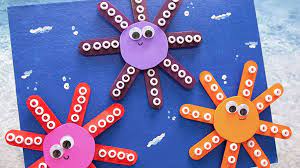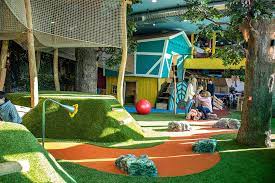
Unleashing the Magic: Exploring the World of Creative Arts and Crafts
Unleashing Creativity: The Magic of Arts and Crafts
In a world filled with screens and digital distractions, there’s something truly magical about the realm of arts and crafts. It’s a place where imagination takes flight, and creativity knows no bounds. Engaging in arts and crafts not only offers endless fun but also provides numerous benefits for children and adults alike.
One of the most beautiful aspects of creative arts and crafts is the freedom it allows for self-expression. Whether it’s painting, drawing, sculpting, or crafting, these activities provide a blank canvas for individuals to explore their inner world. Through art, emotions can be expressed, ideas can be brought to life, and stories can be told without uttering a single word.
Engaging in arts and crafts also nurtures problem-solving skills. When faced with a challenge or an idea that needs materializing, individuals must think critically and find innovative solutions. This process encourages them to experiment with different techniques, materials, colours, and textures to achieve their desired outcome. The ability to approach problems creatively is a valuable skill that extends far beyond the realm of art.
Moreover, arts and crafts promote fine motor skills development. Activities such as cutting paper, manipulating clay or threading beads require precise hand-eye coordination and dexterity. These tasks help strengthen muscles in the hands and fingers while improving hand control – skills that are essential for everyday tasks like writing or tying shoelaces.
Beyond individual growth, arts and crafts create opportunities for social interaction. Whether it’s collaborating on group projects or participating in community workshops or classes, these activities bring people together around a shared passion for creativity. Engaging in art-related activities fosters communication skills as participants exchange ideas, give feedback, and collaborate on projects.
Additionally, engaging in creative arts has been shown to have therapeutic benefits. It provides an outlet for stress relief by allowing individuals to focus on the present moment while immersing themselves in the artistic process. It can be a form of meditation, helping to calm the mind and promote relaxation. Many find solace in the act of creating, finding it to be a source of comfort and self-care.
Arts and crafts also have educational value. They encourage children to explore different materials, colours, and textures, stimulating their senses and curiosity. These activities enhance cognitive development by promoting problem-solving skills, critical thinking, and decision-making abilities. Furthermore, they provide an avenue for learning about history, culture, and various art movements.
In conclusion, arts and crafts are not just about creating something beautiful; they hold immense power in nurturing creativity, developing fine motor skills, fostering social interaction, providing therapeutic benefits, and promoting educational growth. So why not set aside some time to embark on an artistic adventure? Grab those paintbrushes or dive into that box of colourful beads – you never know what wonders you might create or discover along the way. Let your imagination soar as you uncover the magic of arts and crafts!
Frequently Asked Questions: Creative Arts and Crafts in the UK
- What materials do I need for creative arts and crafts?
- How can I get started with creative arts and crafts?
- Where can I find inspiration for creative arts and crafts projects?
- What are the best tools and supplies for creative arts and crafts?
- What are some easy beginner projects for creative arts and crafts?
What materials do I need for creative arts and crafts?
When it comes to creative arts and crafts, the possibilities are endless, and the materials you’ll need can vary depending on the specific project. However, here’s a list of some essential materials that are commonly used in various art and craft activities:
- Paper: A versatile material used for drawing, painting, origami, collage, and more. Different types of paper include construction paper, cardstock, watercolor paper, and tissue paper.
- Paint: Acrylic paints or watercolors are popular choices for painting projects. They come in a wide range of colors and can be used on various surfaces.
- Brushes: Different sizes and types of brushes are necessary for applying paint or creating different textures in your artwork.
- Markers and Pens: These are great for drawing, outlining, or adding details to your creations. Permanent markers or fine-tip pens work well on different surfaces.
- Colored Pencils: Ideal for detailed drawings or shading techniques. Colored pencils come in a variety of shades and can be blended to create beautiful effects.
- Clay or Playdough: Perfect for sculpting and creating three-dimensional artworks. Air-dry clay or polymer clay can be used to make sculptures that harden over time.
- Glue: A must-have adhesive for sticking materials together in collage projects or assembling crafts.
- Scissors: Essential for cutting paper, fabric, or other materials into desired shapes.
- Craft Foam/Felt: These materials are great for creating soft crafts like puppets or adding texture to your projects.
- Beads/Buttons/Sequins: These small decorative items can add sparkle and dimension to your crafts.
- Yarn/String/Ribbon: Perfect for making friendship bracelets, weaving projects, or adding embellishments to your creations.
- Recyclable Materials: Don’t forget about repurposing everyday items like egg cartons, toilet paper rolls, or bottle caps. These can be used for various craft projects.
Remember, this is just a starting point, and the materials you need will depend on your specific project. Feel free to explore and experiment with different materials to unleash your creativity and make your artwork truly unique!
How can I get started with creative arts and crafts?
Getting started with creative arts and crafts is an exciting journey that anyone can embark on. Here are some steps to help you dive into the world of artistic expression:
- Identify your interests: Explore different art forms and crafts to find what resonates with you. Whether it’s painting, drawing, pottery, knitting, or paper crafting, choose something that sparks your curiosity and passion.
- Gather basic supplies: Depending on the art form you choose, gather the necessary materials and tools. Start with the essentials such as sketchbooks, pencils, paints, brushes, scissors, glue, and paper. As you progress, you can expand your collection.
- Seek inspiration: Look for inspiration in various sources such as books, magazines, online platforms (Pinterest or Instagram), or even nature. Explore different styles and techniques to find what appeals to you.
- Start simple: Begin with basic projects that match your skill level. Simple exercises like doodling or creating simple shapes can help build confidence and familiarity with your chosen medium.
- Learn from others: Take advantage of tutorials and classes available online or in your local community centres or art studios. Many artists share their knowledge through video tutorials or workshops where you can learn techniques and gain insights from experienced practitioners.
- Experiment and practice: Don’t be afraid to experiment with different materials, colours, techniques, and styles. Allow yourself the freedom to make mistakes as they often lead to unexpected discoveries and growth as an artist.
- Join a creative community: Engage with other artists by joining art clubs or online communities where you can share ideas, seek feedback on your work, and learn from fellow enthusiasts.
- Make time for creativity: Set aside dedicated time for arts and crafts regularly in your schedule – it could be a few minutes each day or longer sessions during weekends. Consistency is key in developing skills and nurturing creativity.
- Embrace the process: Remember that art is not just about the final product but also about the joy and fulfillment that comes from the creative process itself. Allow yourself to experiment, explore, and enjoy every step along the way.
- Share your work: Share your creations with others, whether it’s with friends, family, or through online platforms. Embrace feedback and use it as an opportunity to grow and improve.
Remember, there are no right or wrong ways to express yourself through arts and crafts. The most important thing is to let your imagination guide you and enjoy the journey of self-expression and creativity. So go ahead, grab those art supplies, and let your creativity soar!
Where can I find inspiration for creative arts and crafts projects?
Finding inspiration for creative arts and crafts projects can be an exciting journey. Here are a few places where you can seek inspiration:
- Nature: Step outside and immerse yourself in the beauty of nature. Take a walk in the park, visit a garden, or explore the beach. Pay attention to the colors, shapes, and textures around you. Nature can provide endless inspiration for art projects.
- Art Museums and Galleries: Visit local art museums and galleries to view different styles and mediums of artwork. Observe the techniques used by artists and gain inspiration from their creativity. Many museums also offer workshops or guided tours that can spark your imagination.
- Online Platforms: Browse through websites like Pinterest, Instagram, or art blogs dedicated to arts and crafts. These platforms are filled with a vast range of project ideas, tutorials, and images that can ignite your creativity. You can save or bookmark your favorite ideas for future reference.
- Books and Magazines: Visit your local library or bookstore to explore books on arts and crafts. Look for books that focus on specific techniques, materials, or themes that interest you. Craft magazines often feature step-by-step tutorials and innovative project ideas.
- Craft Supply Stores: Take a trip to craft supply stores near you. Browse through their aisles filled with paints, papers, fabrics, beads, yarns, and other materials. Allow yourself to be inspired by the variety of supplies available.
- Everyday Objects: Look around your home or workspace with fresh eyes. Everyday objects like buttons, bottle caps, fabric scraps, or old magazines can become unique elements in your art projects when repurposed creatively.
- Personal Experiences: Draw inspiration from your own life experiences – memories from travel adventures, special occasions, or personal milestones can fuel your creativity.
- Collaborate with Others: Engage in group crafting sessions with friends or join local art clubs or workshops where you can exchange ideas and learn from fellow artists. Sharing and collaborating with others can spark new inspiration.
- Social Causes and Current Events: Explore how art can be used to raise awareness or support social causes. Stay informed about current events and consider how you can express your thoughts or emotions through art.
Remember, inspiration can come from anywhere! Keep an open mind, embrace experimentation, and allow your creativity to flow freely. The most important thing is to enjoy the process and let your imagination guide you on your artistic journey.
What are the best tools and supplies for creative arts and crafts?
When it comes to creative arts and crafts, having the right tools and supplies can make all the difference in bringing your artistic vision to life. Here are some essential items that every artist or crafter should consider:
- Drawing and Painting Supplies: A basic set of pencils, erasers, sketchbooks, and a variety of paints (such as watercolors, acrylics, or oils) are essential for creating beautiful drawings and paintings.
- Brushes: Invest in a range of brushes with different shapes and sizes to achieve various effects. Flat brushes are great for broad strokes, while round brushes work well for detailed work.
- Paper and Canvases: Stock up on different types of paper suitable for your chosen medium, such as drawing paper or watercolor paper. If you prefer painting on canvas, have a few stretched canvases or canvas boards on hand.
- Cutting Tools: A good pair of scissors is a must-have for any crafter. Additionally, consider investing in a craft knife or a cutting mat if you frequently work with paper or other materials that require precise cutting.
- Adhesives: Depending on the type of crafts you enjoy, adhesives like glue sticks, craft glue, double-sided tape, or hot glue guns can be invaluable for sticking materials together securely.
- Craft Materials: Explore an assortment of craft materials such as colored papers, cardstock, ribbons, beads, buttons, fabric scraps, yarns, and pipe cleaners to add texture and dimension to your projects.
- Sculpting Materials: If sculpting is your passion, clay (such as polymer clay or air-dry clay), sculpting tools like wire cutters or carving tools can help you shape your creations with precision.
- Markers and Pens: A collection of markers in various colors and tip sizes can be handy for adding details or vibrant colors to your artwork. Additionally, fine-tipped pens or calligraphy pens are great for adding intricate designs or lettering.
- Embellishments: Decorative elements like stickers, sequins, glitter, and washi tape can add a touch of sparkle and personality to your crafts.
- Storage and Organization: Keep your tools and supplies tidy with storage solutions like plastic containers, drawers, or art supply cases. This will help you stay organized and easily find what you need for your projects.
Remember, the best tools and supplies will vary depending on your specific interests and artistic style. Experiment with different materials and techniques to find what works best for you. Don’t be afraid to explore new mediums or try out unconventional materials – creativity knows no limits!
What are some easy beginner projects for creative arts and crafts?
If you’re new to the world of arts and crafts, there are plenty of easy and enjoyable projects to get you started. Here are a few ideas:
- Paper Collages: Cut out pictures from magazines or colored paper and glue them onto a larger sheet to create a visually appealing collage. You can choose a theme or simply let your imagination guide you.
- Friendship Bracelets: Learn the art of knotting or braiding colorful threads to make beautiful bracelets for yourself or your friends. There are various patterns and techniques available online to help you get started.
- Painted Rocks: Find smooth rocks outdoors, clean them, and paint them with vibrant colors or intricate designs using acrylic paints. These painted rocks can be used as paperweights, garden decorations, or even as gifts.
- Origami: Origami is the art of paper folding, and it offers endless possibilities for creating beautiful shapes and figures. Start with simple designs like paper airplanes, flowers, or animals, and gradually challenge yourself with more complex creations.
- Popsicle Stick Crafts: Collect popsicle sticks and use them to create mini houses, photo frames, puppets, or even jewelry boxes. You can paint them, glue them together, and decorate them with beads or other embellishments.
- Handmade Greeting Cards: Design your own personalized greeting cards for birthdays, holidays, or any special occasion using colored cardstock paper, markers, stickers, and other decorative materials.
- String Art: Hammer nails into a wooden board in various patterns (letters, shapes), then wrap colorful strings around the nails to create unique designs. This project allows you to experiment with different colors and textures.
- Mosaic Art: Use small pieces of colored glass tiles or broken ceramic pieces to create mosaic patterns on surfaces like flower pots or picture frames using adhesive glue.
- Tissue Paper Flowers: Cut tissue paper into different shapes (circles, petals) and layer them together to create beautiful flowers. You can attach them to stems made of pipe cleaners or wire and display them in a vase.
- Decoupage: Transform everyday objects like boxes, trays, or glass jars by decorating them with cut-out images from magazines or decorative paper using decoupage glue. This technique can give your items a unique and personalized touch.
Remember, the most important thing is to have fun and let your creativity flow. Don’t be afraid to experiment, try new techniques, and make each project your own. Enjoy the process of creating something beautiful with your own hands!



